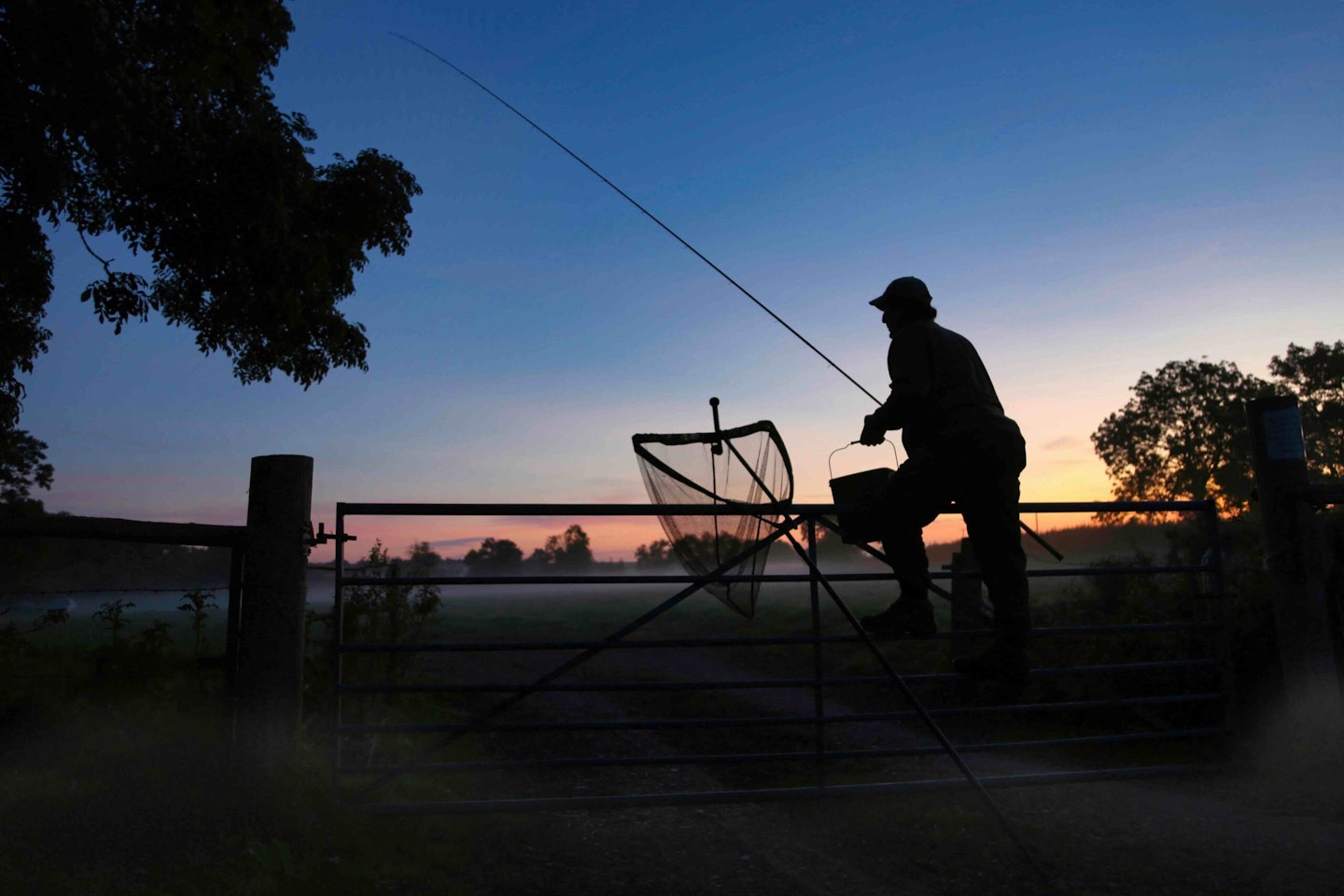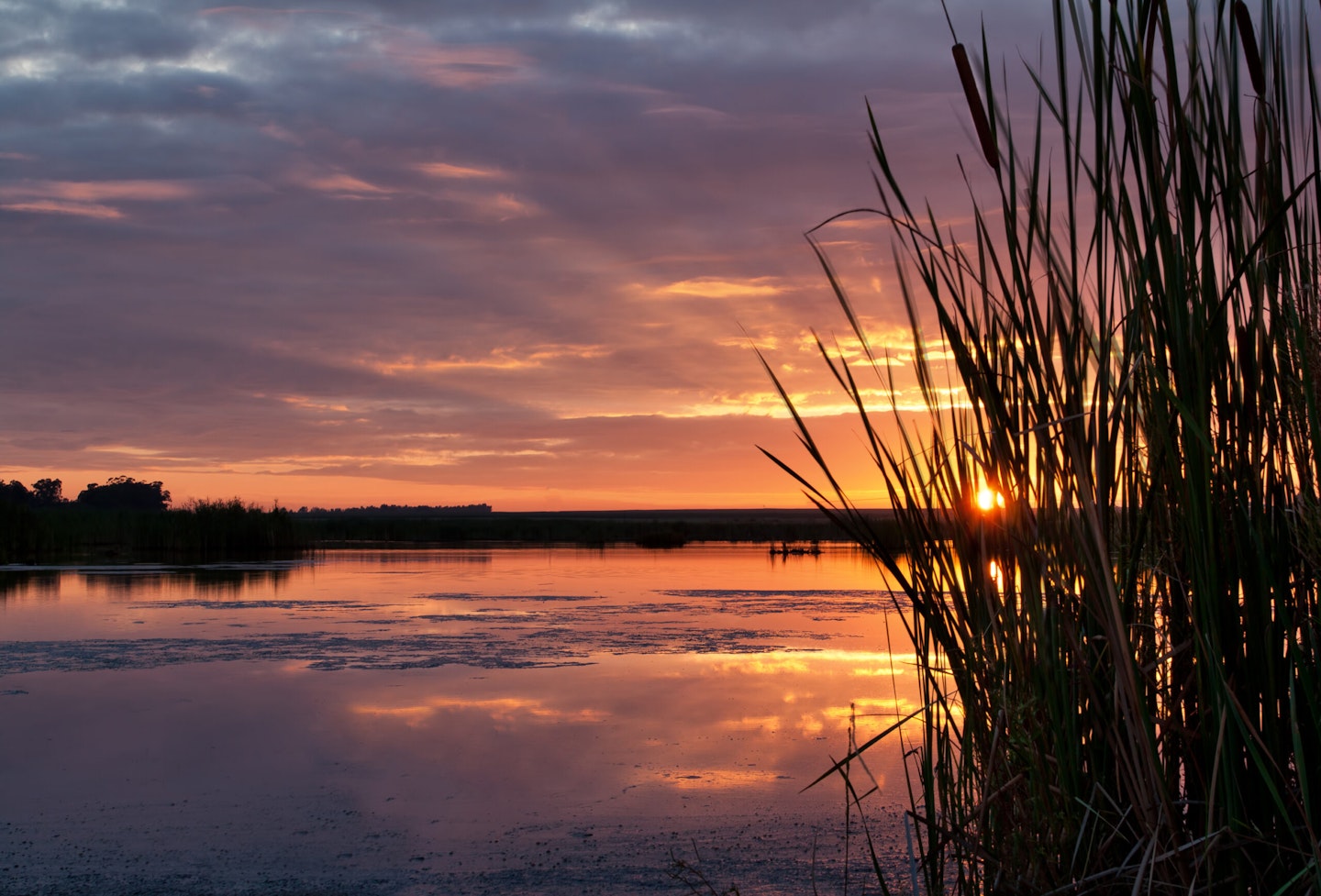Unlike many other sports, fishing is heavily influenced by external factors, many of which are beyond our control. Regardless of the species you target, it’s often said that the best times to be on the bank are at dawn and dusk. Even the general public associates anglers with being up at the crack of dawn—but why is this? In this article, we explore how light levels impact your fishing and how to use them to your advantage to catch more fish.
Too bright
Some of the poorest fishing conditions occur in very bright light. When the sun is beaming down in summer or winter, it often coincides with high-pressure conditions, which often puts the fish off feeding. While this isn’t ideal for many coarse fish, some, like rudd, do thrive in such conditions.
However, on the whole, bright light generally doesn’t make for great fishing, especially on rivers when they are running low and clear. If you’re out on the bank, using minimal feed is best as you're often looking for opportunist bites. Heading to areas of cover—anything that provides sanctuary and shade—as fish tend to congregate in these areas.
IF YOU ARE FISHING IN BRIGHT WEATHER, A PAIR OF THE BEST FISHING POLAROIDS WILL HELP YOU MASSIVELY.

Overcast
If you often find yourself fishing during the day, as many of us do, some of the best sessions will come when there is plenty of cloud cover to limit sunlight penetration in the water. Overcast weather helps reduce shadows from birdlife and anglers, making fish that little bit less wary and more inclined to feed. While these may not always be the most comfortable days to sit outside, planning your sessions around low-pressure conditions and overcast skies can significantly improve your catch rates.
IF YOU SPEND A LOT OF TIME ON THE BANK, GET YOURSELF ONE OF THE BEST FISHING CHAIRS.

Dawn break
As an angler, getting to the water's edge by daybreak not only rewards you with stunning sunrises but also places you there when fish are generally at their most active, and species like tench, carp, pike, and crucians are prime targets as the sun begins to rise.
At first light, activity in the lake increases as oxygen levels, which dip during the night, start to recover, and as the lake "wakes up," natural food sources such as daphnia, bloodworm, and snails become more active. With the boost in fish metabolism due to rising oxygen levels, they begin feeding, making the first two hours of daylight the most productive for anglers.
IF YOU WANT TO CATCH PLENTY OF FISH, HEAD TO ONE OF THESE GREAT VENUES.

Dusk
The saying "one last cast" is famous among anglers for good reason—generally, the later you can stay on the bank before dark, the higher your chances of catching a fish, especially a specimen. As explained, if conditions have been particularly bright during the day, fish tend to be reluctant feeders, but as the light fades and temperatures cool slightly, this can trigger them to feed.
In the summer months especially, you may go all day without a bite, only for your swim to come alive in the last hour before dark, allowing you to plan your sessions accordingly so you are on the bank when the fish are feeding. Predator fishing is often most effective at dusk, as predatory fish take advantage of their superior eyesight to hunt prey.
BARBEL FEED WELL AT DUSK, HERE IS A GUIDE TO THE BEST RODS TO CATCH BARBEL...

Night
Fishing at night can be highly productive for a range of species, as the darkness boosts fish confidence, often making them less cautious and more willing to feed. If you’re targeting carp, overnight sessions are a must, as bites frequently come after dark. Other species, such as barbel, bream, and tench, also thrive in low-light conditions, making them excellent targets for night fishing.
IF YOU SPEND THE NIGHT ON THE BANK, THE BEST FISHING BIVVIES WILL KEEP YOU WARM AND DRY!

Subscribe to Angling Times magazine today. Choose a Print+ Subscription and you'll get instant digital access and so much more. PLUS FREE UK delivery.
